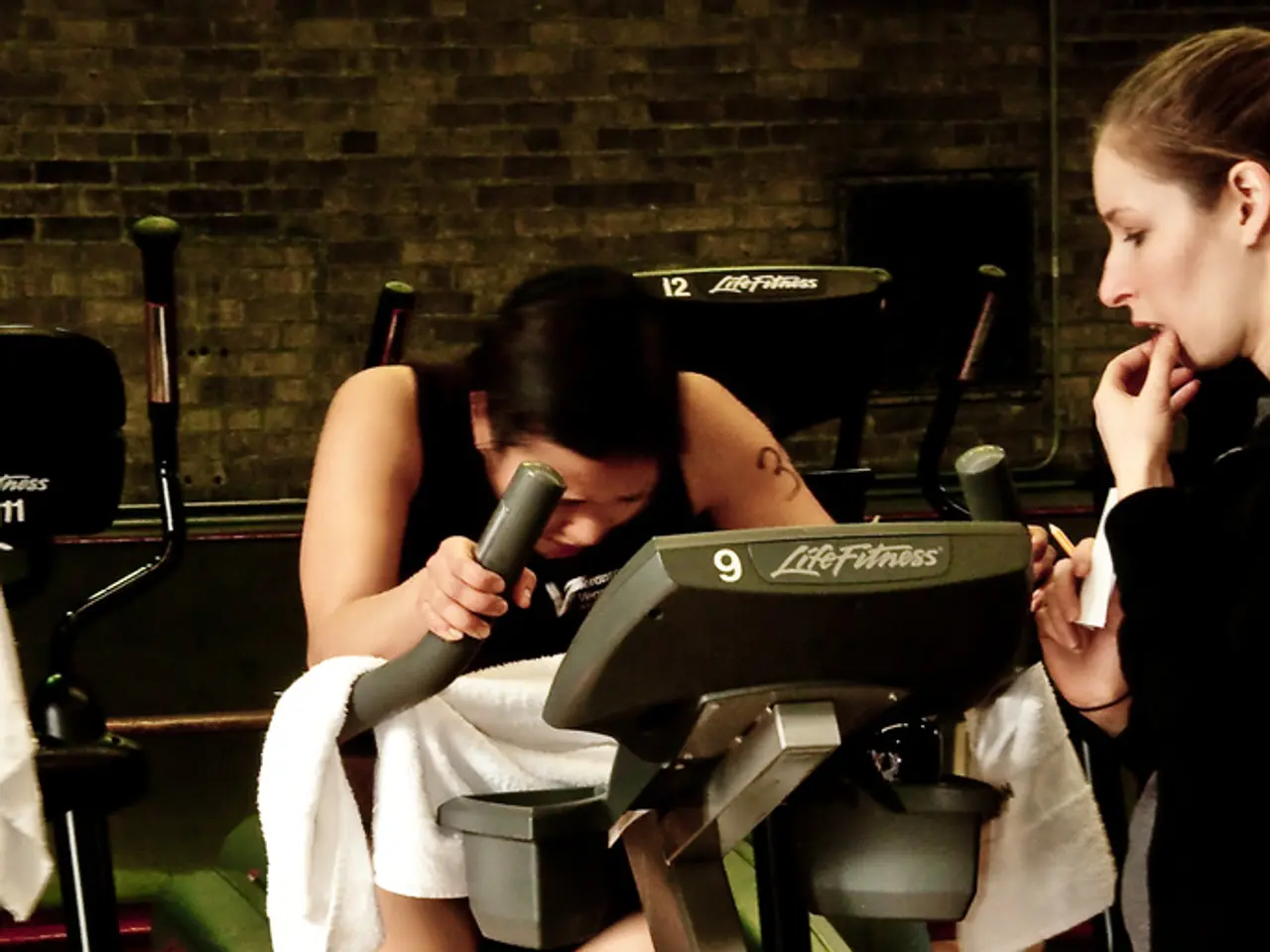Strengthen Your Pelvic Floor at Any Age Through This Single Exercise Suggested by an Expert in Pilates
Pelvic floor exercises, often associated with Kegels, are a simple yet powerful way to maintain and improve pelvic health throughout one's life. Movement expert Vanessa Michielon recommends these exercises for people of all ages, emphasizing their importance for women in midlife.
In midlife and beyond, pelvic floor exercises can help counteract muscle weakening caused by aging, hormonal changes during perimenopause and menopause, childbirth, surgeries, or overexertion. These exercises offer multiple benefits, including:
- Improved bladder and bowel control, reducing risks of urinary and fecal incontinence and urgency, which often become more common with age.
- Reduced risk of pelvic organ prolapse, where pelvic organs descend due to loss of muscular support.
- Better sexual function, including increased sensation and stronger orgasms, enhancing intimate relationships which can be affected during midlife changes.
- Support for recovery after childbirth or pelvic surgery, aiding faster restoration of pelvic muscle function.
At other life stages, pelvic floor exercises provide preventive and rehabilitative benefits. During childbearing years, these exercises prepare and strengthen muscles for pregnancy and childbirth, supporting recovery postpartum. For older adults, they mitigate muscle decline to maintain continence and comfort.
To perform this exercise, sit on a small Pilates ball or find a comfortable sitting position with a lengthened spine, as suggested by Michielon. Inhale gently, allowing the pelvic floor to relax. On exhalation, the tailbone, pubic bone, and sit bones are drawn towards each other and up towards the belly button. This focuses on contracting the pelvic floor muscles. The exercise should be performed slowly, with a pause at the end of each exhalation to feel the contraction.
Repeat this exercise eight to 10 times at the start or end of a workout, aiming to do it two or three times per week. Consistent practice usually shows improvements in about 4 to 6 weeks.
Strengthening the pelvic floor not only benefits bladder control but also improves sexual function and core stability. By incorporating these exercises into your regular routine, you can maintain pelvic health, prevent common conditions related to muscle weakening, and improve your quality of life. However, it's essential to consult a healthcare professional before trying new pelvic floor exercises to ensure they are suitable for your specific needs.
[1] NHS. (2021). Pelvic floor exercises. https://www.nhs.uk/live-well/exercise/pelvic-floor-exercises/ [2] Mayo Clinic. (2021). Pelvic floor exercises. https://www.mayoclinic.org/healthy-lifestyle/womens-health/in-depth/pelvic-floor-exercises/art-20048371 [3] American College of Obstetricians and Gynecologists. (2021). Pelvic Floor Muscle Training (Kegel Exercises). https://www.acog.org/womens-health/faqs/pelvic-floor-muscle-training-kegel-exercises [4] National Institute on Aging. (2021). Pelvic floor muscle exercises. https://www.nia.nih.gov/health/pelvic-floor-muscle-exercises [5] Cleveland Clinic. (2021). Pelvic floor exercises. https://my.clevelandclinic.org/health/treatments/15413-pelvic-floor-exercises
- Incorporating pelvic floor exercises into a health-and-wellness routine can provide numerous benefits, such as improved bladder control and reduced risks of urinary incontinence, as recommended by the National Health Service (NHS).
- These exercises are essential for women going through menopause, as they can counteract muscle weakening and alleviate symptoms related to pelvic health, according to the Mayo Clinic.
- Fitness enthusiasts can include pelvic floor exercises in their fitness-and-exercise routines, as they not only improve bladder control but also enhance sexual function and core stability, as stated by the American College of Obstetricians and Gynecologists.
- For women's health specifically, strengthening the pelvic floor can help prevent pelvic organ prolapse and improve sexual function during menopause, as evidence by the National Institute on Aging and the Cleveland Clinic.




